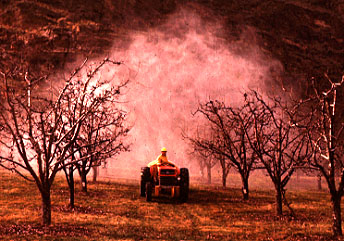
Dr. Douglas G. Pfeiffer, 205C Price Hall
In this laboratory, students are exposed to varying the delivery rate from an airblast orchard sprayer, and evaluating coverage in orchard trees. The lab follows a lecture on the principles of airblast sprayer calibration.
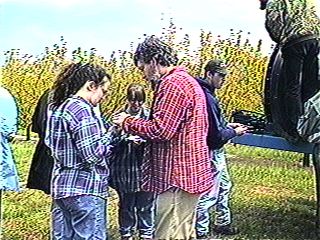
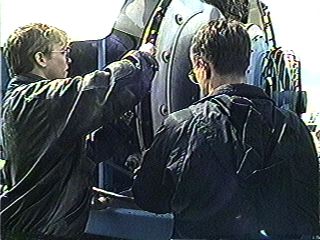
In the first part of the session, carried out at Kentland Research Farm at Virginia Tech, Dr. Pfeiffer covered basic aspects of nozzle arrangement and sprayer calibration. The students calibrated one manifold of a truck-mounted airblast sprayer to deliver a low volume output (about 20 gallons per acre), and the other manifold to a high volume output (about 200 gallons per acre). Water-sensitive paper was attached to each of four 16-foot poles at four different heights (4, 8, 12, and 16 feet), and the first pole was placed at the near side of the tree row, the second pole in the canopy interior, the third pole at the far edge of the canopy, and the fourth pole at the next orchard row.
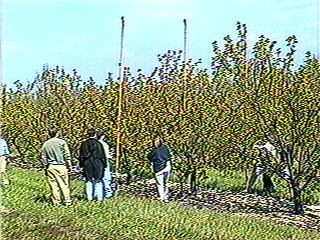
The sprayer was driven down the orchard row, applying water from one manifold toward the poles with water-sensitive paper. The students then retrieved the poles, replaced the exposed papers with fresh papers and the process was repeated with the other calibration.
Video clip of sprayer applying water
After the sprayer had made both applications, the papers were arranged on a board so that penetration patterns could be evaluated.
At the low volume calibration, the yellow papers were stained blue by the water mainly at the lower heights and close to the sprayer (the lower left portion of the left group of papers in the photo). At the high volume setting, there was improved coverage in the top of the tree, and deeper into the tree (see the right group of papers in the photo). The relevance to specific groups of pests was discussed.
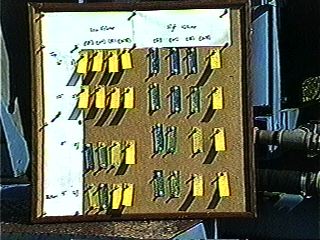
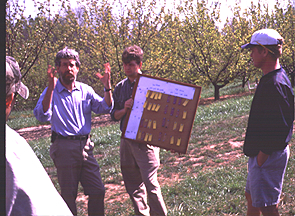
| Virginia Fruit Homepage | Pesticide Usage Homepage |
|---|